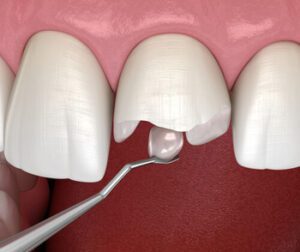When restoring a tooth affected by decay, damage, or wear, dental fillings are one of the most common solutions used to repair and protect your smile. Whether you’ve experienced tooth decay, cracked enamel, or simply worn-down tooth structure, the right filling material can restore function and appearance effectively. But with so many types of dental fillings available, how do you know which one is right for you?
This guide explores the various types of fillings, what they’re made of, and when they’re typically used. It’s all explained clearly and is approachable. Let’s dive in.
Why Do We Need Dental Fillings in the First Place?
Dental fillings are essential for preserving the health, function, and appearance of your natural teeth. When a tooth forms a cavity as a result of tooth decay or suffers damage from injury or wear, it creates a small hole or weakened area in the tooth structure. If left untreated, this opening can become larger, allowing bacteria to spread deeper and lead to infections, pain, or even the need for more complex treatments like a root canal.
In addition to treating cavities, tooth fillings are also used to repair broken teeth, worn-down areas from grinding, and minor fractures. Ultimately, they help preserve your natural tooth structure, restore normal biting and chewing functions, and improve your overall oral health.
Without a dental filling, even a small cavity can progress into a major dental concern. That’s why it’s important to visit your dentist regularly and address any signs of tooth decay early on.
What Happens During a Dental Filling Procedure?
The dental filling procedure usually begins with your dentist numbing the area using a local anaesthetic. The decayed or damaged part of the natural tooth is removed, and the area is cleaned thoroughly. The dentist then applies the filling material directly into the cleaned cavity or uses a mould to prepare a more complex restoration, like an inlay or onlay, at a dental laboratory.
Depending on the condition of your tooth, your dentist will recommend a temporary filling or a permanent one, either as a direct filling done in one visit or an indirect filling requiring a second appointment.
Composite Resin Fillings: Tooth-Coloured and Aesthetic
Composite fillings are crafted from a tooth-coloured composite resin that closely matches and blends with your natural teeth. They’re a popular choice for front teeth and other visible areas because of their natural appearance.
Pros:
- It matches your natural tooth colour
- It bonds directly to the tooth structure, allowing more of the natural tooth to be preserved.
- Great for small to medium-sized cavities
Cons:
- It may wear out faster on the back teeth
- Slightly more expensive than dental amalgam fillings
Composite resin is also commonly used for emergency dental treatment, particularly if aesthetics matter.
Amalgam Fillings: Strong and Long-Lasting
Amalgam fillings, commonly referred to as silver amalgam, are composed of a blend of metals such as mercury, silver, tin, and copper. They’ve been used for decades and are valued for their durability.
Pros:
- Very strong and wear-resistant
- It is ideal for molars and teeth under heavy chewing pressure
- More affordable than other filling materials
Cons:
- Silver-coloured, so more noticeable
- It may expand over time, possibly weakening the tooth
- It contains mercury, though studies show it’s safe for most patients
If you’re not concerned about the aesthetics, amalgam fillings can be a reliable, cost-effective option for damaged teeth.
Gold Fillings: Durable but Expensive
Gold fillings are made from gold alloy and are crafted in a dental lab, making them a type of indirect filling. While not commonly used today, they are incredibly durable and can last 15 years or more with good care.
Pros:
- Extremely strong and long-lasting
- Doesn’t corrode
- Some patients prefer the look of a gold-filling
Cons:
- Much more expensive
- Requires multiple visits
- Highly visible
While gold is a premium tooth-filling option, it’s best suited for those looking for longevity and who are not overly concerned with appearance.
Porcelain Fillings: Stain-resistant and natural-looking
Also known as ceramic fillings, porcelain fillings are crafted at a dental laboratory and bonded to the tooth. They’re ideal for those who want a tooth-coloured option that resists staining better than composite resin.
Pros:
- Matches natural teeth
- Resistant to staining
- Suitable for larger restorations like inlays and onlays
Cons:
- More brittle than gold or amalgam
- Typically more expensive
- It may require the removal of more teeth to fit
Porcelain is often used in cosmetic dentistry and works well for larger areas that need reinforcement without compromising appearance.
Glass Ionomer Fillings: Good for Kids and Gum Line Cavities
Glass ionomer fillings release fluoride over time, which helps protect the tooth from further decay. They are often used in temporary fillings, for baby teeth, or in areas not subjected to heavy chewing forces.
Pros:
- Releases fluoride for added protection
- Bonds to the tooth without extensive preparation
- Useful for tooth fillings near the gum line
Cons:
- Less durable than other materials
- It is not as aesthetically pleasing as composite or porcelain
- Prone to wear and chipping
They’re a good option for children or in cases where a temporary filling is needed before a more permanent dental filling is applied.
Direct vs Indirect Fillings: What’s the Difference?
- Direct fillings are placed directly into the cavity during one visit. Most composite, amalgam, and glass ionomer fillings fall into this category.
- Indirect fillings like inlays and onlays are custom-made in a dental laboratory and cemented onto the tooth in a second appointment. These are usually made from gold, porcelain, or composite resin.
Your dentist will suggest one depending on the extent of damage, the location of the cavity, and your budget.
Choosing the Right Filling Material for Your Needs
Several factors can influence the choice of tooth-filling materials, including:
- The location of the cavity
- How much of the tooth structure remains
- Aesthetic preferences
- Budget
- Whether you’re getting a temporary or permanent restoration
Consulting a trusted dental professional ensures you get the most appropriate filling procedure tailored to your oral health needs.
Final Thoughts: Keep Your Fillings and Teeth Healthy
No matter which type of filling you choose, maintaining good dental health is essential. That means:
- Brushing and flossing daily
- Scheduling regular dental check-ups
- Avoiding habits such as grinding your teeth or chewing on hard items
Tooth fillings offer an effective way to preserve natural teeth and reduce the likelihood of needing more extensive treatments in the future. Speak to your dentist regularly to ensure your fillings are in good condition and serving their purpose.
Got a concern about a tooth cavity or a worn filling? Don’t wait. Book an appointment with Balmoral Dental Centre at (07) 3113 9789 today and protect your smile.
Note: Any surgical or invasive procedure carries risks. Before proceeding, you should seek a second opinion from an appropriately qualified health practitioner.
References
U.S. Food and Drug Administration. (n.d.). Dental amalgam fillings. https://www.fda.gov/medical-devices/dental-devices/dental-amalgam-fillings
Cleveland Clinic. (n.d.). Dental fillings: Purpose, types, and procedure. https://my.clevelandclinic.org/health/treatments/17002-dental-fillings
Priyadarshini, H., Mahantesha, S., & Basavaraj, P. (2015). Knowledge and attitude of general public regarding amalgam and composite restorations in South India – A questionnaire study. Medicina Oral, Patología Oral y Cirugía Bucal, 11(2), 99–106. https://scielo.isciii.es/pdf/medicorpa/v11n2/en_23.pdf



